
The Sphingidae are a family of moths commonly called sphinx moths, also colloquially known as hawk moths, with many of their caterpillars known as "hornworms"; it includes about 1,450 species. It is best represented in the tropics, but species are found in every region. They are moderate to large in size and are distinguished among moths for their agile and sustained flying ability, similar enough to that of hummingbirds as to be reliably mistaken for them. Their narrow wings and streamlined abdomens are adaptations for rapid flight. The family was named by French zoologist Pierre André Latreille in 1802.
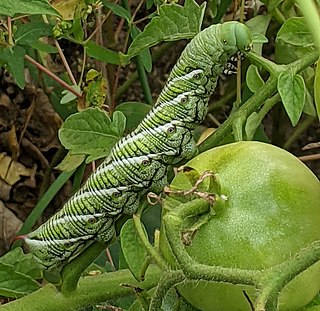
Manduca sexta is a moth of the family Sphingidae present through much of the Americas. The species was first described by Carl Linnaeus in his 1763 Centuria Insectorum.

Manduca quinquemaculata, the five-spotted hawkmoth, is a brown and gray hawk moth of the family Sphingidae. The caterpillar, often referred to as the tomato hornworm, can be a major pest in gardens; they get their name from a dark projection on their posterior end and their use of tomatoes as host plants. Tomato hornworms are closely related to the tobacco hornworm Manduca sexta. This confusion arises because caterpillars of both species have similar morphologies and feed on the foliage of various plants from the family Solanaceae, so either species can be found on tobacco or tomato leaves. Because of this, the plant on which the caterpillar is found does not indicate its species.

Manduca rustica, the rustic sphinx, is a moth of the family Sphingidae. The species was first described by Johan Christian Fabricius in 1775.

Manduca hannibal is a moth of the family Sphingidae.
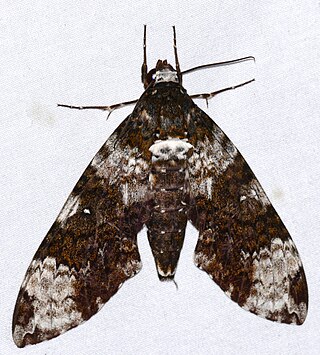
Manduca albiplaga, the white-plaqued sphinx, is a moth of the family Sphingidae. It was first described by Francis Walker in 1856.

Manduca muscosa, the muscosa sphinx, is a moth of the family Sphingidae.

Manduca occulta, the occult sphinx, is a moth of the family Sphingidae.
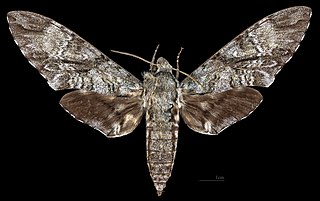
Manduca barnesi is a moth of the family Sphingidae.

Manduca brasiliensis is a moth of the family Sphingidae.

Manduca diffissa is a moth of the family Sphingidae first described by Arthur Gardiner Butler in 1871. It is known from most of South America.

Manduca dilucida is a moth of the family Sphingidae first described by William Henry Edwards in 1887.

Manduca franciscae is a moth of the family Sphingidae.

Manduca violaalba is a moth of the family Sphingidae first described by Benjamin Preston Clark in 1922.
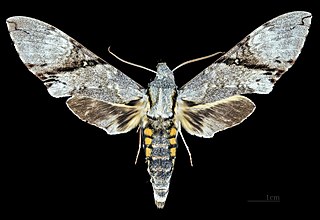
Manduca lefeburii is a moth of the family Sphingidae.
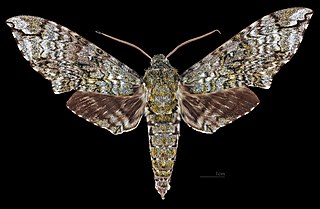
Manduca lichenea is a moth of the family Sphingidae first described by Hermann Burmeister in 1855.

Manduca neglecta is a moth of the family Sphingidae. It is known from eastern Ecuador, Peru and Bolivia.

Manduca reducta is a moth of the family Sphingidae. It is known from Peru and Bolivia.

Manduca stuarti is a moth of the family Sphingidae.

Manduca scutata is a moth of the family Sphingidae.























